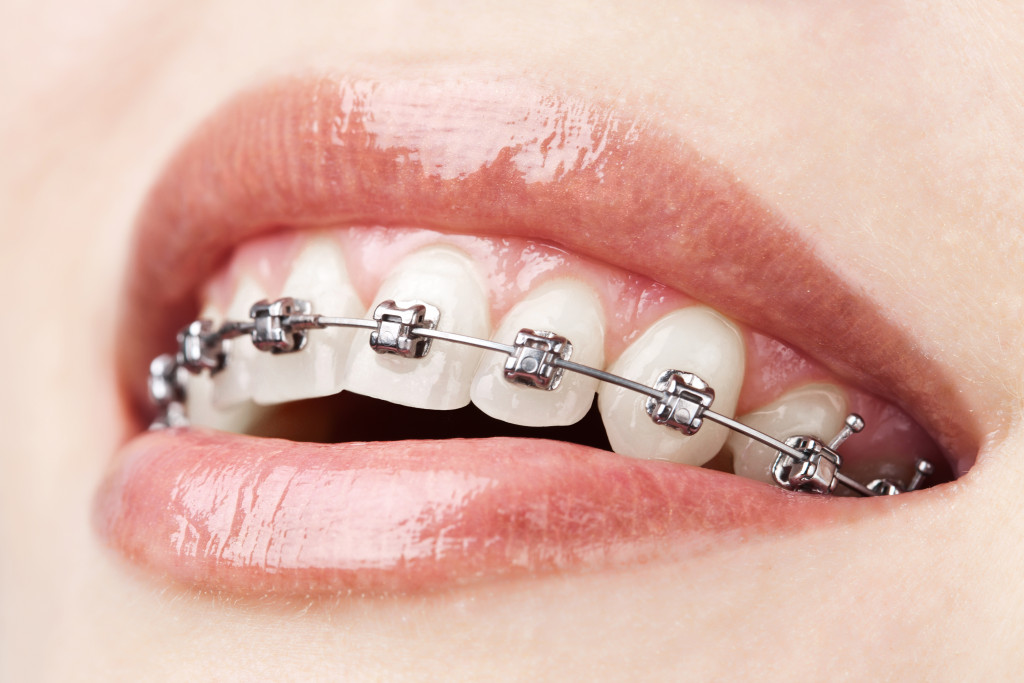When is the right time for a child to start wearing braces? This is a question that many parents have, and the answer can vary depending on the child’s age and dental health. Here are five signs that your child may need braces. If you suspect your child may need braces or other orthodontic support such as implants, please consult with an expert as soon as possible. Early diagnosis and treatment can help ensure a successful outcome. In any case, here are some situations when your children might need teeth correction:
1. Crooked or Crowded Teeth
If your child’s teeth are crowded or crooked, this can cause some problems. Crowded teeth are more difficult to clean, leading to plaque build-up and an increased risk of tooth decay and gum disease. Crooked teeth can also cause bite problems and make it difficult for your child to chew properly.
2. Protruding Teeth
Protruding teeth can be more susceptible to injury, and they can also make your child self-conscious about their smile. Suppose you notice that your child’s teeth are sticking out further than they should. In that case, it’s vital to have them evaluated by a dentist or orthodontist.
3. Jaw Pain
Jaw pain can signify an underlying dental problem, such as an improper bite. Suppose your child is complaining of jaw pain. It’s essential to have them seen by a professional to determine and treat the cause appropriately.
4. Difficulty Chewing or Biting
If your child has difficulty chewing or biting, this can be a sign of an improper bite. This can also lead to difficulty speaking clearly and can cause your child to avoid certain foods. Suppose you notice that your child has difficulty chewing or biting. It would help if a dentist or orthodontist evaluated your children.
5. Mouth Breathing
Mouth breathing can be a sign of an obstruction in the airway, such as enlarged tonsils or adenoids. It can also lead to dry mouth, increasing the risk of tooth decay. If your child is mouth breathing, it’s essential to have them evaluated by a professional to determine and treat the cause appropriately.
If you suspect that your child may need braces, consult with a dentist or orthodontist as soon as possible. Early diagnosis and treatment can help ensure a successful outcome.
Types of Braces for Children
Several different braces can be used to correct dental problems in children. The best props for your child will depend on their individual needs and the severity of their dental problem.
Metal Braces

Metal braces are the most common braces and are also the most visible. Metal braces are made of stainless steel or titanium, and they are attached to the teeth with brackets. Metal braces are usually the most affordable option, and they are effective at treating a wide range of dental problems.
Ceramic Braces
Ceramic braces are made of clear or tooth-colored brackets, making them less visible than metal braces. Ceramic braces are attached to the teeth the same way as metal braces, but they are less likely to irritate the gums. Ceramic braces are more expensive than metal braces. Still, they may be a good option for children who are self-conscious about their appearance.
Invisalign
Invisalign is a type of clear aligner that is virtually invisible when worn. Invisalign aligners are made of an explicit, flexible material custom-fit to your child’s teeth. Invisalign aligners are removed for eating, brushing, and flossing. You or your children must wear this for at least 22 hours per day. Invisalign is more expensive than traditional braces, but it may be a good option for children concerned about braces’ appearance.
The orthodontist will also discuss the expected duration of treatment and the cost of braces. It’s essential to keep in mind that the cost of braces can vary depending on the type of braces, the severity of the dental problem, and the length of treatment.
Braces Can Provide a Variety of Benefits
Early treatment can often avoid the need for more extensive and expensive treatment later. Additionally, braces can improve the function of the teeth, which can help your child chew and speak more effectively. Finally, braces can improve the appearance of the teeth, which can boost your child’s self-confidence.
If your child displays any of the five signs outlined in this blog post, it may be time to consider braces. Orthodontics can help fix a wide variety of dental problems and give children a confident smile they can show off for years to come. If you have any questions or concerns about orthodontic treatment for your child, don’t hesitate to reach out to your dentist or orthodontist.